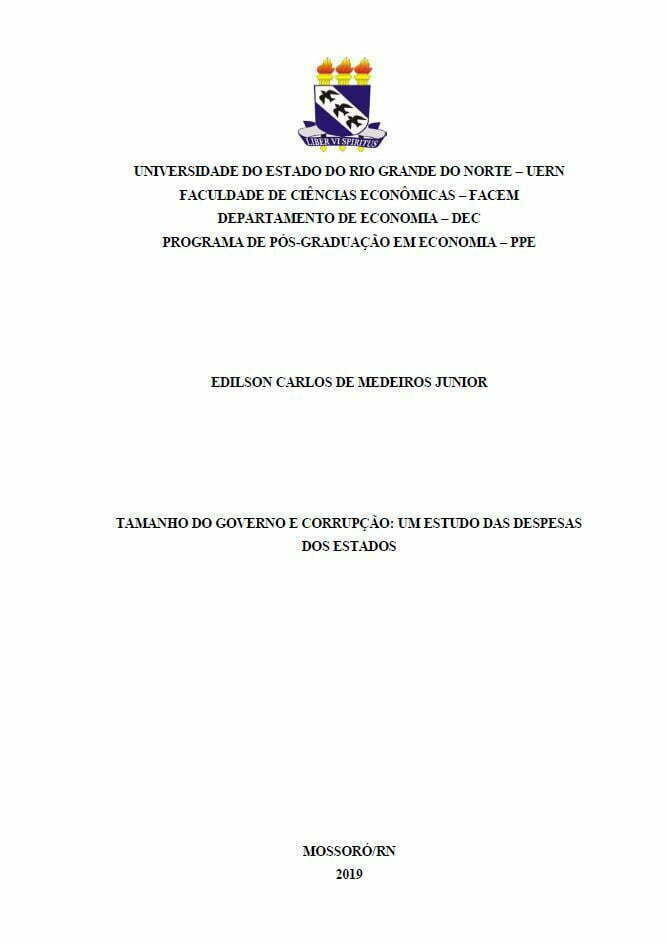
[Abstract]
This paper analyzes the relationship between government size (total and by functions) of all Brazilian states in corruption, between the period 2000 to 2014. As a measure of corruption, the Government Corruption Indicator (GCI) was used, a metric developed by Boll (2010) and updated by Souza and Araújo (2017) based on data from the Cadastro de Contas Irregulares do Tribunal de Contas da União (Brazil).
To achieve the proposed objectives the data were organized as panel data, estimated via Generalized Factorial Least Squares and the System-Generalized Method of Moments (Arellano and Bover (1995) and Blundell and Bond (1998)). The results presented with respect to the lagged dependent variable indicate that the increase in corruption in the previous year corroborates the increase in corruption crimes in the following year. With regard to total expenditure and spending on social security, health, education, administration, and others, it is possible to conclude that increased government spending in these respective areas contributes to increased levels of corruption.
Keywords: Corruption. Government Size. ICG.
Publication Year: 2019
Student: Edilson Carlos de Medeiros Junior
Advisor: Prof. Dr. Francisco Soares de Lima
Program: Master in Economics (PPE/UERN)
University: Universidade do Estado do Rio Grande do Norte (Brazil)
More information: https://repositorio.unb.br/handle/10482/24598






